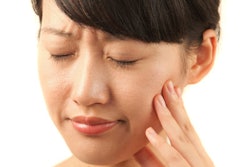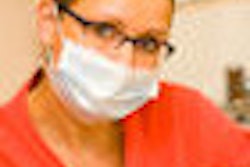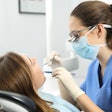
More than half of employed people in Canada with low incomes fall into the gap between public and private health insurance and hence are not able to access adequate dental care, according to a new study in the Journal of Public Health Dentistry (in press).
A telephone survey of 2,027 Canadian adults showed that 56.9% of people with annual household incomes of $20,000 to $39,000 are paying out of their own pockets for dental care. Only 7.2% of people in this group who responded to the survey have public dental insurance, and 35.8% have private insurance.
Furthermore, 26.8% answered positively to facing three types of financial barriers to dental care:
- The cost of dental burden is a financial burden.
- They have avoided or delayed care because of cost.
- They are unable to afford all the treatments that their dental care provider has suggested.
"This study identifies a gap in dental care access among those who don't qualify for public programs but don't have the types of jobs that offer employment-based private insurance benefits," lead investigator Carlos Quiñonez, DMD, PhD, told DrBicuspid.com. "And that gap is present both in Canada and the U.S., since there are similar demographic profiles of insurance coverage in both countries."
Dr. Quiñonez, an assistant professor in the department of biological and diagnostic sciences/community dentistry at the University of Toronto, designed the survey in 2007 in conjunction with now-deceased lead investigator David Locker, BDS, PhD, and John Maggirias, DDS. A team of professional interviewers administered it in June 2008 in English and French to adults across Canada by random-digit dialing.
Among the questions were three relating to financial barriers:
- In the past three years, has the cost of dental care been a financial burden to you?
- In the past three years, have you delayed or avoided going for a dental examination or treatment because of cost?
- In the past three years, have you been unable to have all the treatment recommended by a dentist or specialist because of cost?
The results revealed that more than half (57.6%) of respondents with household incomes of $20,000 to $39,000 who have private dental insurance responded positively to one or more of the financial barrier questions and 22.9% responded positively to all three. The respective numbers for respondents in this income group who pay out of pocket for dental care were 67.1% and 32.3%. The only group that responded in higher proportions to between one and three of the financial barrier questions were people with an annual household income of less than $20,000 who pay out of pocket for dental care.
The investigators also found that people who responded positively to any of the financial barrier questions were less likely to have regular dental checkups or to have had a dental visit in the previous year, independent of insurance status and household income. Furthermore, they uncovered a significant association between experiencing financial barriers and lower self-rated oral health, having lost a tooth in the previous year and overall greater oral health impact as measured by the Oral Health Impact Profile (OHIP-14).
These results persisted even after the researchers controlled for private insurance coverage, household income, gender, age, education, and language in which the interview was conducted. Overall, household income was an independent predictor of worse oral health outcomes in four of the five regression analyses the investigators performed, while positive responses to the financial barrier questions were independent predictors in all five.
The easiest way to improve the situation is to provide the working poor with some financial support for dental care, according to Dr. Quiñonez.
Burton Edelstein, DDS, MPH, a professor of dentistry and health policy and management at Columbia University, agreed that the results are generalizable to the U.S. and signal the need for policy changes.
"The finding that low-income adults, even those with dental insurance, report lower benefits from having coverage is critical," Dr. Edelstein noted in an e-mail to DrBicuspid.com. "While this may be interpreted by some as reflecting only the negative impact of low socioeconomic status on oral health and dental-care-seeking behaviors -- that is, 'blaming the patient' -- it may also reflect the fact that dental 'insurance,' with its frequent, significant, out-of-pocket costs, does not sufficiently reduce the cost barrier."
Eliminating disparities in oral health and access to dental care across all income groups requires that private and public dental coverage be designed in ways that truly reduce the entry threshold of affordability, Dr. Edelstein added.



















